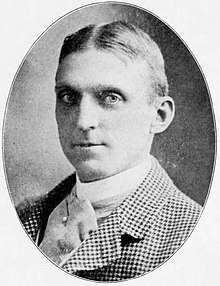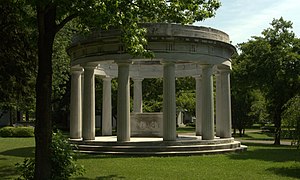
George Bruce Cortelyou was an American Cabinet secretary of the early twentieth century. He held various positions in the presidential administrations of Grover Cleveland, William McKinley, and Theodore Roosevelt.

Theodore Roosevelt Inaugural National Historic Site preserves the Ansley Wilcox House, at 641 Delaware Avenue in Buffalo, New York. Here, after the assassination of William McKinley, Theodore Roosevelt took the oath of office as President of the United States on September 14, 1901. A New York historical marker outside the house indicates that it was the site of Theodore Roosevelt's Inauguration.
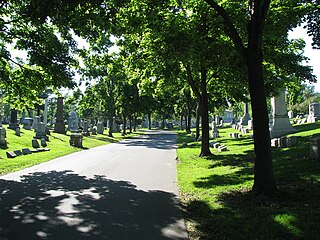
Forest Lawn Cemetery is a historic rural cemetery in Buffalo, New York, founded in 1849 by Charles E. Clarke. It covers over 269 acres (1.1 km2) and over 152,000 are buried there, including U.S. President Millard Fillmore, First Lady Abigail Fillmore, singer Rick James, Congresswoman Shirley Chisholm, and inventor Lawrence Dale Bell. Forest Lawn is on the National Register of Historic Places.
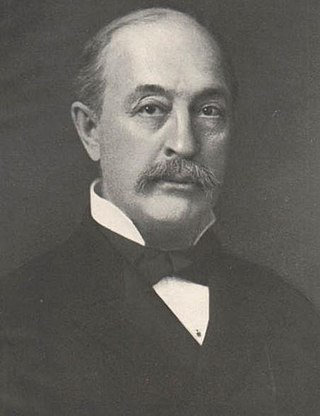
Daniel Newton Lockwood was an American lawyer, politician from New York, and the 18th District Attorney of Erie County, New York. He served a total of three terms in the U.S. House of Representatives from 1877 to 1879, then again from 1891 to 1895.
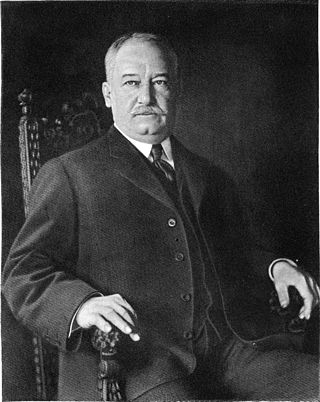
Ansley Wilcox was an American scholar, Oxford graduate, prominent lawyer, civil service reform commissioner, New York political insider and friend of Theodore Roosevelt. After the assassination of William McKinley, on September 14, 1901, Vice President Roosevelt was sworn in as 26th president of the United States in the library of Wilcox's home at 641 Delaware Avenue in Buffalo, New York.
The Grover Cleveland Golf Course is a historic golf course located in Buffalo, New York that hosted the 1912 U.S. Open that was founded as The Country Club of Buffalo. It is one of two courses owned by Erie County.

Edward Brodhead Green, very often referred to as E. B. Green, was a major American architect from New York State.
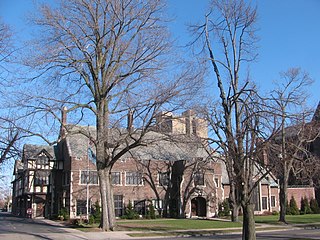
Saturn Club is a private social club, founded in 1885, in Buffalo in Erie County, New York that currently operates out of an NRHP building at 977 Delaware Ave. in Buffalo, New York.
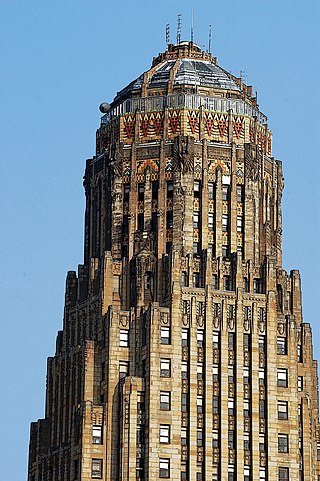
The Architecture of Buffalo, New York, particularly the buildings constructed between the American Civil War and the Great Depression, is said to have created a new, distinctly American form of architecture and to have influenced design throughout the world.

Charles Cary Rumsey was an American sculptor and an eight-goal polo player.

Edward Austin Kent was a prominent architect in Buffalo, New York. He died in the sinking of the RMS Titanic and was seen helping women and children into the lifeboats.
Trumbull Cary was an American banker, lawyer, and politician from New York.

Charles Waterhouse Goodyear was an American lawyer, businessman, lumberman, and member of the prominent Goodyear family of New York. Based in Buffalo, New York, along with his brother, Frank, Charles was the founder and president of several companies, including the Buffalo and Susquehanna Railroad, Great Southern Lumber Company, Goodyear Lumber Co., Buffalo & Susquehanna Coal and Coke Co., and the New Orleans Great Northern Railroad Company.

George E. Matthews (1855–1911) was president of the "J. N. Matthews Co.," which published the Buffalo Courier-Express. At the time of his death, Matthews owned the Falconwood Club in Grand Island, New York.
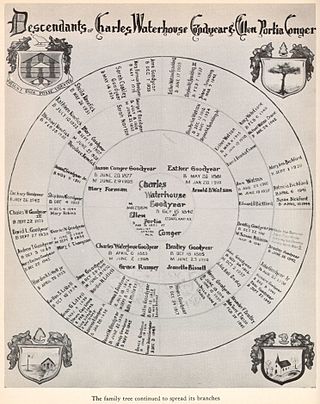
The Goodyear family is a prominent family from New York, whose members founded, owned and ran several businesses, including the Buffalo and Susquehanna Railroad, Great Southern Lumber Company, Goodyear Lumber Co., Buffalo & Susquehanna Coal and Coke Co., and the New Orleans Great Northern Railroad Company. Stephen Goodyear was a founder of the New Haven Colony, and served as governor from 1643-1658. Stephen's descendent, Charles Goodyear, invented vulcanized rubber; the Goodyear Tire and Rubber Company is named after him. The family was also involved in the arts. Anson Goodyear was an organizer of the Museum of Modern Art in New York City; he served as its first president and a member of the board of trustees. William Henry Goodyear was the first curator of the Metropolitan Museum of Art.

William Insco Buchanan was an American diplomat who spent much of his career in Latin America.
Charles Hallam Keep was an American banker who served as Assistant Secretary of the Treasury from 1903 to 1907 where he was chairman of the Keep Commission and later served as president of the Knickerbocker Trust.
Seward Cary, was an American polo player from New York State.
Thomas Brown Lockwood was an American lawyer, banker, politician, and philanthropist from Western New York.
Major Bradley Goodyear was an American lawyer, soldier, and member of the Goodyear family of New York.
